Sirius, the new Brazilian synchrotron light source, is the largest and most complex scientific infrastructure ever built in Brazil, designed to produce the brightest synchrotron light among all the equipment in its energy range.
Synchrotron light sources are large scientific equipment, which produce electromagnetic radiation in a controlled manner. This radiation is used to investigate the composition and structure of matter in its most varied forms, with applications in virtually all areas of knowledge.
As an open research infrastructure, Sirius is available to the Brazilian and international scientific community, allowing hundreds of academic and industrial research projects to be carried out annually, by thousands of researchers.
Sirius contributes to the solution of major scientific and technological challenges, such as the development of vaccines, drugs, and new treatments for diseases, for example. In the area of agriculture, new fertilizers, more resistant and adaptable plant species, and new cultivation technologies may be researched. Sirius also allows studies to make better use of renewable energy sources, better processes for extracting oil in deep waters, and many other applications, with the potential to generate major economic and social impacts.

Synchrotron light sources are, in essence, large machines for producing light, and work similarly to very familiar technologies.
In cell phones, for example, the device’s electronic circuit causes an electrical current – which is formed by the movement of electrons – to oscillate in the conductive material of the antenna. This process, of accelerating and decelerating the particles, produces radio waves and microwaves that are emitted by the telephone and are responsible for the transmission of information.

In hospital X-ray machines, on the other hand, electrons are accelerated in a vacuum to high speeds and then hit a metallic target. Upon reaching it, the particles are stopped by the target’s constituent atoms and the energy lost in this deceleration is emitted in the form of X-rays.
Both examples illustrate a fundamental fact of nature: charged particles, such as electrons, emit electromagnetic waves when they are accelerated.
The types of electromagnetic waves produced depend on the speed at which these particles are traveling when they are accelerated or decelerated. In the cell phone, electrons run in the antenna at relatively low speeds and therefore the radiation produced is in the range of radio and microwave waves. On the other hand, in hospital X-rays, electrons have extremely high speeds, and when they are stopped, the radiation emitted is in the range of X-rays.
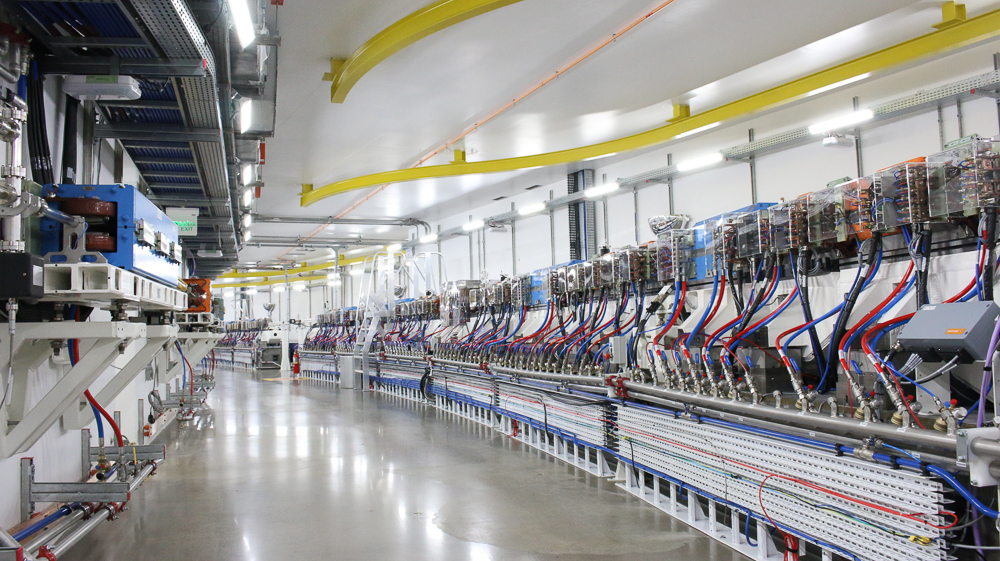
Synchrotron light sources, on the other hand, have at their heart a set of particle accelerators, specifically electron accelerators. These large machines are designed to generate beams of these subatomic particles, accelerate them to very high speeds, very close to the speed of light, and to control their movement.
In a synchrotron light source, electron accelerators keep these particles circulating in stable orbits for several hours, in ultra-high vacuum. During this process, electrons are guided by electromagnets. Whenever electrons are deflected by magnetic fields and forced to make a curve, that is, whenever they undergo centripetal acceleration, they emit electromagnetic radiation. This electromagnetic radiation is called synchrotron light.
Synchrotron light is not emitted in all directions, it is concentrated in the direction tangent to the curve made by the electrons. For this reason, around the particle accelerators, research stations, called beamlines, are installed, which prepares the synchrotron light to illuminate the samples of the materials to be analyzed.
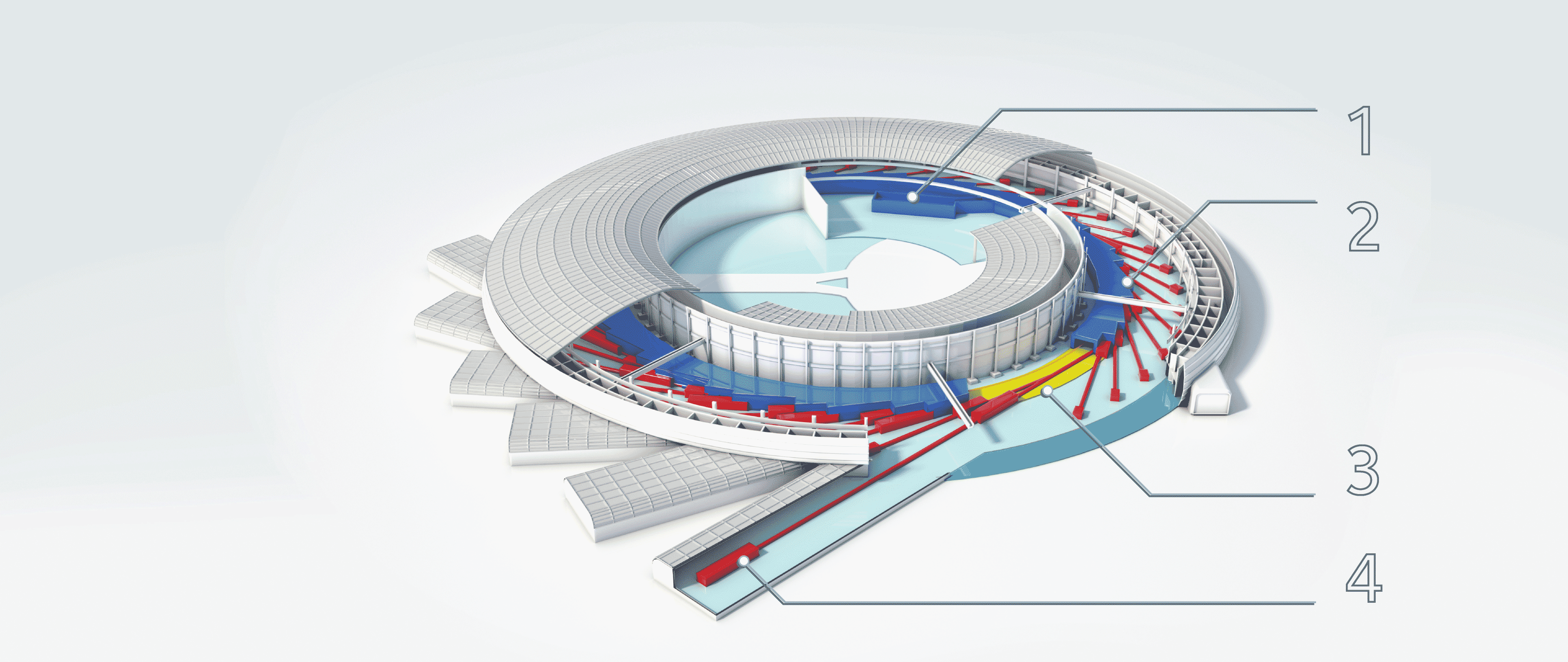
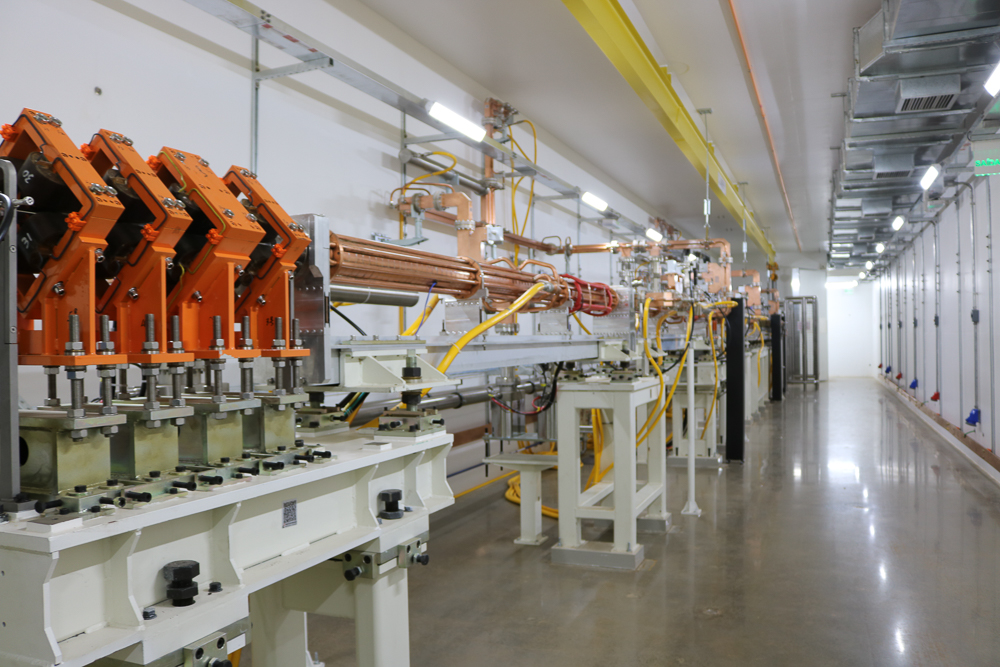
1. LINEAR ACCELERATOR – LINAC
In an equipment called electron gun, these particles are initially emitted from a hot metal plate. Next, the electrons are accelerated by oscillating electric fields to speeds close to the speed of light. Then, the particles are transferred to the Injector Accelerator, or Booster.
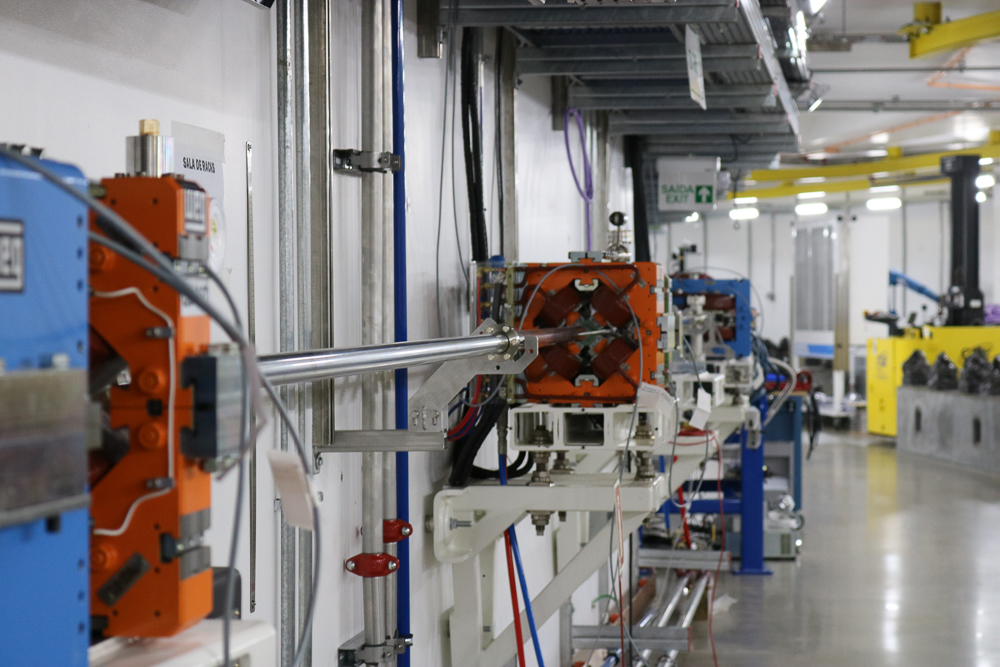
2. INJECTOR ACCELERATOR – BOOSTER
The electrons coming from Linac travel around this circular accelerator 600 thousand times every second. With each loop, the particles have their energy increased until they reach the necessary energy to be transferred to the Main Accelerator, or Storage Ring.
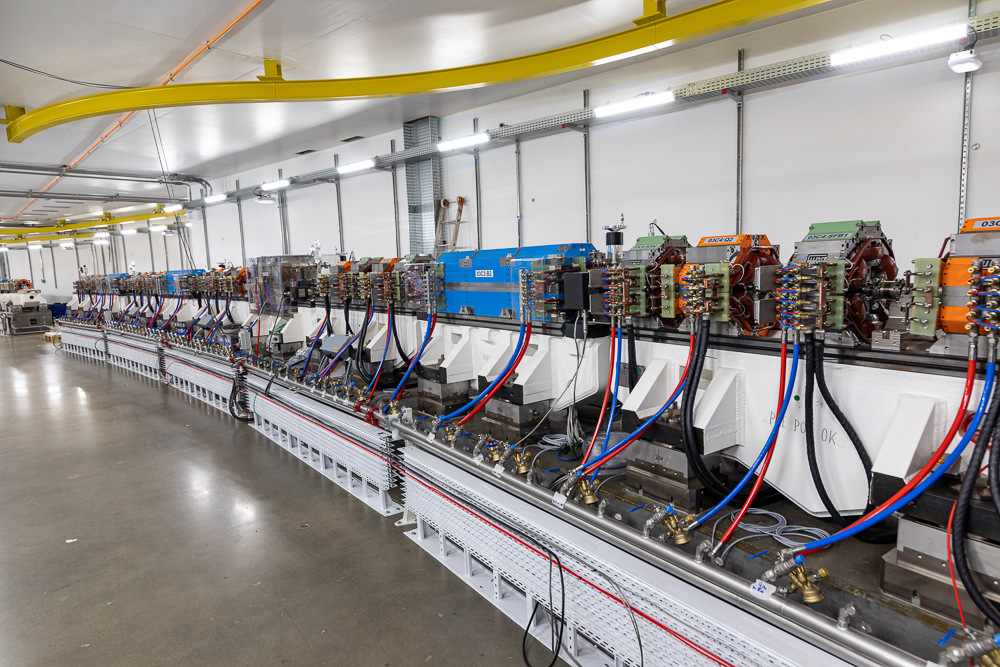
3. MAIN ACCELERATOR – STORAGE RING
In the main accelerator, electrons are kept circulating for hours and hours in stable orbits, guided by magnets. Whenever electrons are deflected by magnetic fields and forced to make a curve, they emit electromagnetic radiation.
This radiation, which has a wide spectrum (from infrared to X-rays) and high brightness, is called synchrotron light. It is emitted in the direction tangent to the curve made by the electrons and directed to the research stations, called beamlines.
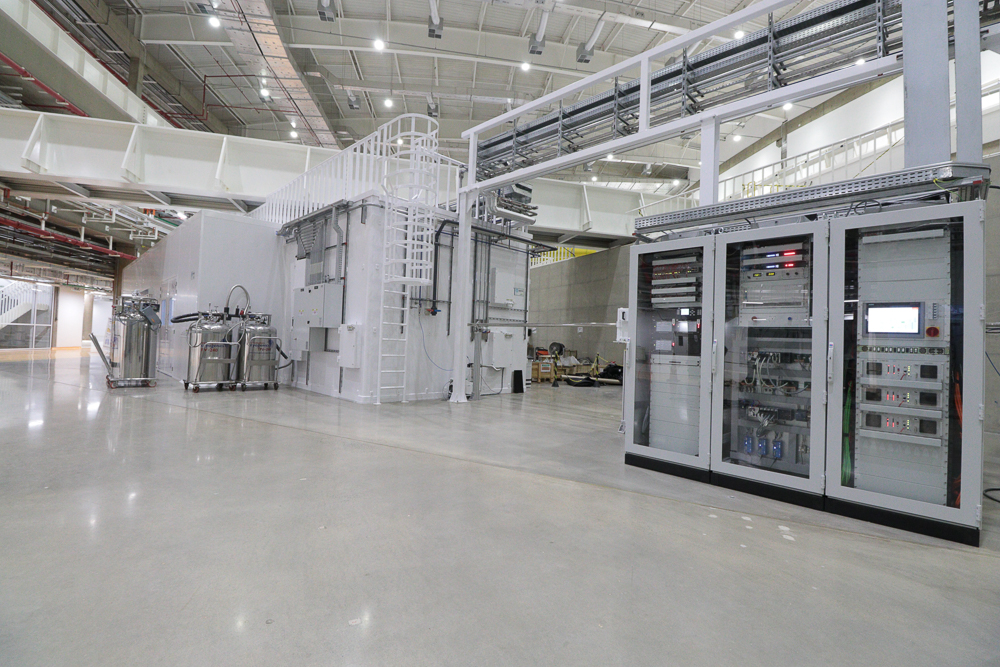
4. RESEARCH STATIONS – BEAMLINES
The beamlines are like complex microscopes, which condition and focus the synchrotron light so that it illuminates the samples of the materials to be analyzed.
From the way the synchrotron light is absorbed, reflected, or scattered by the material, it is possible to investigate its atoms and molecules, their chemical states, spatial organization, and electrical, electronic and magnetic properties, among others.
Synchrotron light sources contain several beamlines, optimized for different experiments, which work independently of each other. This allows several groups of researchers to work simultaneously on different subjects.